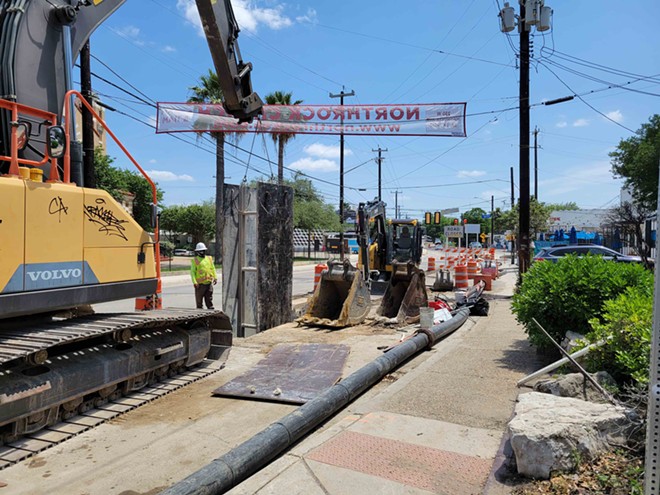
The ordinance, introduced by District 6 Councilwoman Melissa Cabello Havrda, was unanimously approved by council. Little surprise there. For one, it seems like common sense. And, second, it was introduced as slow-moving road construction projects threaten to strangle commercial corridors all over the city.
Anyone who's driven Broadway near downtown or tried to visit a club on the St. Mary's Strip has experienced the headaches. Meanwhile, businesses owners in those areas are voicing legitimate concerns about surviving to see the end of the work.
Havrda's ordinance will assign scores to city construction contractors based on their ability to meet budget, deadline and quality expectations, among other factors. Those who score poorly will be banned from city work for three years.
Although such accountability safeguards seem like something that should have been built into San Antonio's contracting policies for decades, they weren't.
Havrda told the Current she was surprised to learn there were no such rules after getting angry calls from constituents roughly a year ago about sluggish construction work on Old Highway 90.
After the councilwoman quizzed staff about how the city holds slow-moving contractors accountable, she learned that the same companies who cut corners on jobs can easily turn around and win another simply by putting in the low bid.
"I understood that there was no mechanism to incentivize good work or to keep us from continually hiring contractors who can't live up to the expectations we have in our community," Havrda said.
Over the coming months, she conferred with Public Works staff about developing rules that could ensure a fairer bidding process and keep projects on track. In turn, staff met with organizations including the Association of General Contractors to fine tune the guidelines.
Under the ordinance, contractors will be evaluated on six criteria:
- 20% for meeting contract requirements
- 20% for staying on schedule
- 20% for delivering quality work
- 20% for responsiveness
- 10% for keeping on budget
- 10% for closing out a project
Havrda said she hopes the end result will improve public safety while shortening construction times and lowering city costs.
Even so, Havrda said the ordinance should merely be a first step in the city demanding more accountability. She added that she'd like to see similar measures applied to contractors who offer services other than construction.
The new rules also will be more effective if residents raise the flag when they see contractors failing to deliver, according to Havrda. Those with concerns about delays or shoddy work should bring them to the attention of those on council, she added.
"It really was the day-to-day stuff we all do at City Hall," Havdra said of the process that led her to introduce her proposal. "I was just asking questions: Why are we hiring these contractors when they're not doing a good job?"
Of course, residents will have to see how diligently staff applies the rules and how crafty bad contractors are at explaining away their shortcomings. But the ordinance feels like a step in the right direction.
If there's any signal Havrda's work on it should send San Antonio's elected officials it's that they should follow her example and push for more accountability when they get answers from staff that don't make sense.
The passage of the ordinance, which was months in the making, also should be a sign to local policymakers that the sometimes-glacial pace of seeing an ordinance through to approval means they can't wait to act until problems reach a crisis level.
"I wish I could retroactively apply these rules to what's happening on St. Mary's and some of these other places, but that's not what's happening," Havrda said.
Coming soon: SA Current Daily newsletter. We’ll send you a handful of interesting San Antonio stories every morning. Subscribe now to not miss a thing.
Follow us: Google News | NewsBreak | Instagram | Facebook | Twitter



















